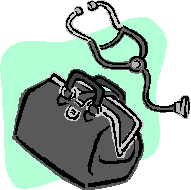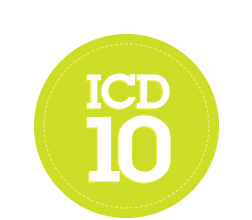Yet another in a seemingly endless series of articles blaming patients for all that’s wrong in health care is running in Modern Healthcare. The 3-part series entitled Channeling Choice looks at how patients (people like you and I) just aren’t making the kinds of choices and engaging in the kinds of behaviors experts think we are should.
Yet another in a seemingly endless series of articles blaming patients for all that’s wrong in health care is running in Modern Healthcare. The 3-part series entitled Channeling Choice looks at how patients (people like you and I) just aren’t making the kinds of choices and engaging in the kinds of behaviors experts think we are should.
 Like so many of these articles, the Modern Healthcare series shares war stories of chronically ill people making poor health choices despite the well-intentioned efforts of local health care providers to “fix” them. One such story bemoans how a heavy-set, low-income, congestive heart failure patient named Mary, paid more attention when grocery shopping to what something cost than its salt content…despite “being advised by her doctor” to do so. Like so many “Marys and Martys,” the Mary in this story ended upon with multiple hospital admissions over a short period of time. If only Mary had heeded her doctor’s advice.
Like so many of these articles, the Modern Healthcare series shares war stories of chronically ill people making poor health choices despite the well-intentioned efforts of local health care providers to “fix” them. One such story bemoans how a heavy-set, low-income, congestive heart failure patient named Mary, paid more attention when grocery shopping to what something cost than its salt content…despite “being advised by her doctor” to do so. Like so many “Marys and Martys,” the Mary in this story ended upon with multiple hospital admissions over a short period of time. If only Mary had heeded her doctor’s advice.
It Takes Two To Tango – Mary’s Side Of The Story
In an ideal world, I could buy into Modern Healthcare’s conclusion that Mary’s choices and behavior were to blame for her condition and her outcomes. Under the right circumstances I would even go so far as to suggest that Mary’s hospital and physicians not be financially penalized for her non adherent behavior and subsequent preventable hospital readmission.
Mind you I said under the “right circumstances.” What would the right set of circumstances look like?
Glad you asked. In the ideal world at a minimum here is what I would expect to happen:
- Mary and her doctor would be in agreement as to what is wrong, e.g., the diagnosis
- Mary’s doctor reviews her treatment options with her and they engage in a shared decision as to the course of treatment
- Mary’s doctor would validate Mary’s understanding of the above by employ basis “teach back” communication methods
Please take note of the importance of the physician’s patient communication skills in the ideal world.
Unfortunately Mary (And The Rest Of Us) Do Not Live In An Ideal World
In the real world, physicians’ patient communication skills are often anything but ideal. Here’s what I mean.
Mary and her doctor would be in agreement concerning the diagnosis – Patients have usually formed a hypothesis about their medical problem before seeing the doctor. Agreement concerning the diagnosis at face value would appear to be a prerequisite to patient adherence (i.e. medication and dietary recommendations) and desired health outcomes.
It goes without saying that in order for physicians to know where patients are coming from concerning their complaint they need to ask the patient. But that is not happening. A recent study found that only 16% of physicians admitted to routinely asking patients their “perspectives” regarding their condition.
It should come as no surprise therefore that in a separate study of patients in a Cardiology Clinic over half (55%) of patient diagnosed with Congested Heart Failure were unable to accurately recall or agree with their physician’s diagnosis of CHF.
It is extremely unlikely therefore that Mary’s doctor sought her perspective concerning her condition opening the door to a lack of agreement as to the diagnosis and what to do about it.
Mary’s doctor reviews her treatment options with her and they engage in a shared decision as to the course of treatment – Shared decision-making is a communication skill typically associated with physicians that routinely employ a patient-centered communication style with patients throughout the medical exam. The evidence suggests that the majority of physicians today employ the same physician-directed communication skills they learned years ago in medical school. Consistent with this trend, another study reveals that only 37% of physicians admitting to routinely engaging patients in shared decision-making (in whatever form that takes) meaning that again the odds are against Mary having been engaged by her physician in shared decision-making.
Demonstrates her understanding of the above by the physician’s use of “teach back” – Patient teach-back is a communication technique where the clinician asks the patient to repeat back what they were told to make sure the patient understood what was said by the clinician. A 2012 study found that to the extent that patient teach-back is sporadically employed and only then in instances where the physician and patient were of a different culture, ethnicity or language.
In particular, patients who speak a language other than English, are of Black/African-American race/ethnicity, those with advanced age, and those with fewer years of formal education were more like to experience patient teach-back than their counter English-speaking, white, educated counter parts. Giving Mary’s clinicians the benefit of the doubt, let’s assume she had a 50-50 chance of have benefits from patient teach-back at some point in her treatment.
The Take Away?
The reality is that, like the rest of us, neither Mary nor her hospital or treating physicians live in an ideal world. As such, one can make a strong, evidence-based argument that hospitals and physicians are just as culpable as patients, if not more so, for failing to employ the kind of patient communication skills needed to promote patient engagement, activation and effective self-care at home.
The health care industry over the last 100 years has done a great job of socializing people to assume the passive sick role when we seek care. In that role we are not expected to challenge physicians or question their decisions…in fact many patients are fearful of being labeled as difficult when they do take on such behaviors.
If hospitals, health plans and physicians expect patients to change their behavior, they themselves have to change the way their think about, communicate and relate to patients (aka people). They themselves have to become truly patient-centered more engaging to patients…from the patient’s perspective!
As a first step, I suggest that hospitals, health plans and physicians stop blaming patients for everything that’s wrong with health care today. Maybe then we can make some progress at collaboratively building on all that’s right with health care.
Sources:
Sarkar, U., et al. Patient- Physicians’ Information Exchange In Outpatient Cardiac Care: Time For A Heart To Heart?. Patient Education And Counseling. 2010.
Jager, A. , et al. Who Gets a Teach-Back? Patient Reported Incidence of Experiencing a Teach-Back. Journal of Health Communication: International Perspectives. 2012. 17:sup3, 294-302.
Frosch, D., et al. An Effort To Spread Decision Aids In Five California Primary Care Practices Yielded Low Distribution, Highlighting Hurdles. Health Affairs. 32, no.2 (2013):311-320.







